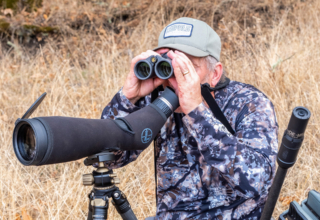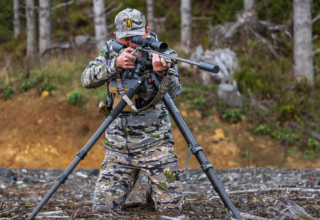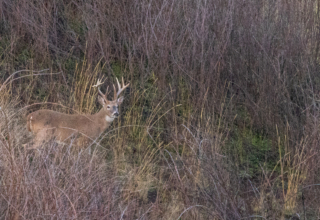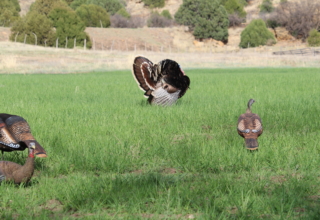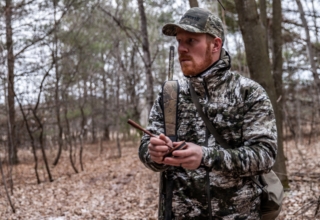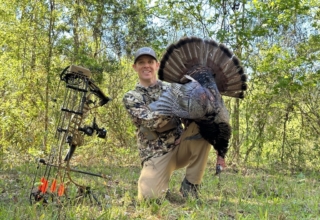Spring is sprung. If you’re a turkey addict, there’s no better time of year. Here’s how to punch all your tags, whether one or several, in the first week of season.
by Scott Haugen
Scouting and video footage from several trail cameras confirmed multiple toms working a specific section of a timbered ridge. Two days before the spring opener, a popup blind was in place.
I set the blind where three trails converged, 100 yards inside the timber from a small meadow where turkeys often fed, traveled and hung out. Well before daylight on opening morning, I placed a stuffed hen decoy 15 paces from the blind. Quietly I sat, waiting for dawn to filter through the forest of tall Douglas firs.
When robins began singing, I let out a series of hen helps. Nothing. The next series was louder. Two groups of toms gobbled back. They were still on the roost and a long way away.
Over the next 10 minutes, I called a few more times. The toms gobbled each time but hadn’t left the roost. That’s when I prepared for a more extended morning than planned.
The toms knew where I was, so I shut up. Seconds later, a thundering gobble about shook me off my stool. Another gobble followed. Three toms came in silent, not making a sound until they were within arm’s reach of the blind. They strutted up to the decoy, one mounted it, and just like that, I filled a tag.
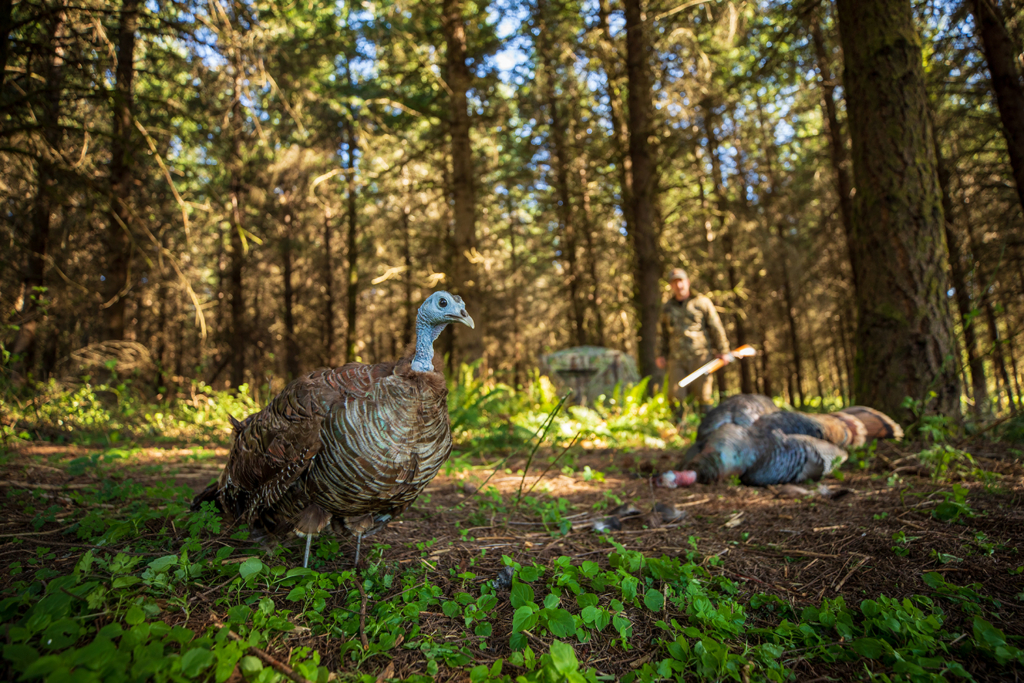
I quickly grabbed the tom and the decoy and got out of there. There were still two groups of toms on the ridge. They’d heard the shot, but they hadn’t seen me.
The following morning, I was in the same blind. This time five jakes came running up to the decoy after 30 minutes of back-and-forth calling. Their antics and chatter, along with some of my seductive hen calls made with a Slayer diaphragm call, did the rest. Soon, a lone tom came strutting through the timber. I saw the cream-colored tips of its tail fan first. Then, a bright red, white, and blue head materialized. As it neared the jakes, they scattered. The tom approached the same hen decoy set at the same spot as the day prior. Again, the shot was simple.
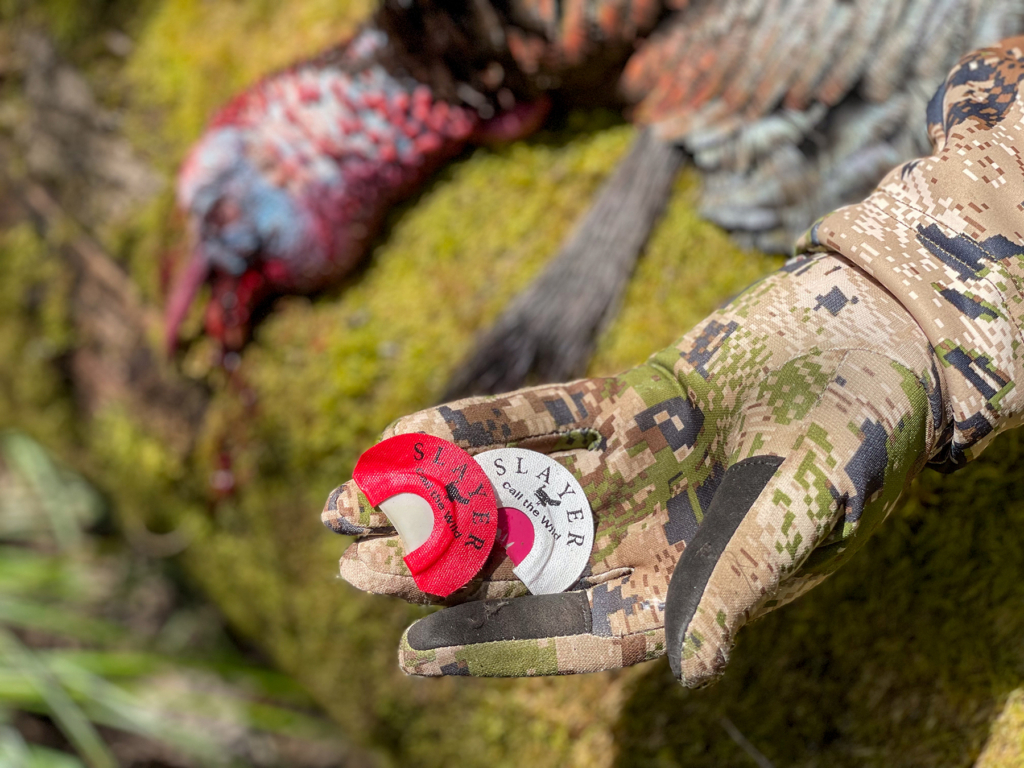
I returned the following day with one more tag to fill, but not until 2:00 in the afternoon. There were still two groups of toms on that mountain; a trio and a group of five.
Shortly after 2:00 p.m., the same stuffer hen decoy was set in the same spot where the three trails merged. Calling didn’t produce a gobble for over 45 minutes. But when the first gobbles echoed through the forest, the show began. Double and triple gobbles ensued. I couldn’t even get a series of yelps passed my lips before the toms fired back. I live for days like this.
Seeing all five toms coming at me, shoulder to shoulder, tails fully fanned, chests of armor plating puffed up and reflecting sunlight at every angle, was an image I’ll never forget. They came to the decoy strutting and gobbling. I filled my third and final tag when the tom on the right cleared.
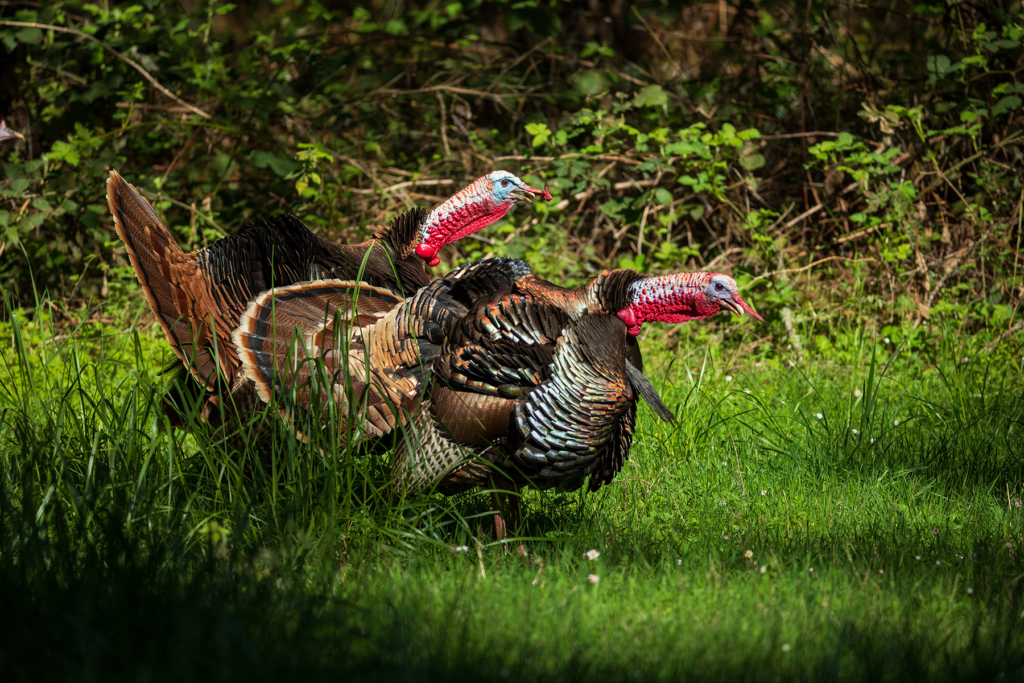
The following season, very few toms were on that mountain. I had to travel to fill my three tags, but I filled them during the season’s first week. The outcome of both seasons came together thanks to a lot of pre-season scouting. Knowing tom numbers, where they traveled, when, and where they roosted all helped me decide exactly where to set up, what decoys to use, and what calls to offer.
In that first season, tom numbers were higher than I’d seen in over 20 years of hunting the ridge. It was the first time I filled all three tags there in a single season, let alone three consecutive days. Hen numbers were also high, and combined with an extended, wet, cold spring, not all the breeding was done before the season, as is typically the case. With a handful of hens still moving and a surplus of toms, I knew exactly how I wanted to hunt the area. The first bird was a bonus because it came in so fast. I was able to get out of there before educating other toms. The second tom was also a big break because it was a lone bird I’d not seen before. The fact that I could take that tom early in the morning, helped.
Trail cameras revealed two other groups of toms routinely cruising that ridge in the afternoon and early evening. That’s why I decided to target them when I did. But I wasn’t planning on filling a tag until after 5:00 p.m.
I wanted to fill the three tags quickly in the first season, as I had back surgery scheduled later that week. The surgery would take me out of the game for the rest of the season.
The second season, I covered ground, wanting to fill tags fast because I was hunting turkeys in other states. Both plans worked.
If I had one window to fill multiple turkey tags, it would be as close to the opener as possible. Over the past 39 years, I’ve done this in multiple Western states. Here’s why.
Early-season birds are fresh, having yet to receive pressure from fellow hunters. These birds are also aggressive in responding to calls and decoys. But there are specific things to look for to figure out how to hunt these toms most effectively.
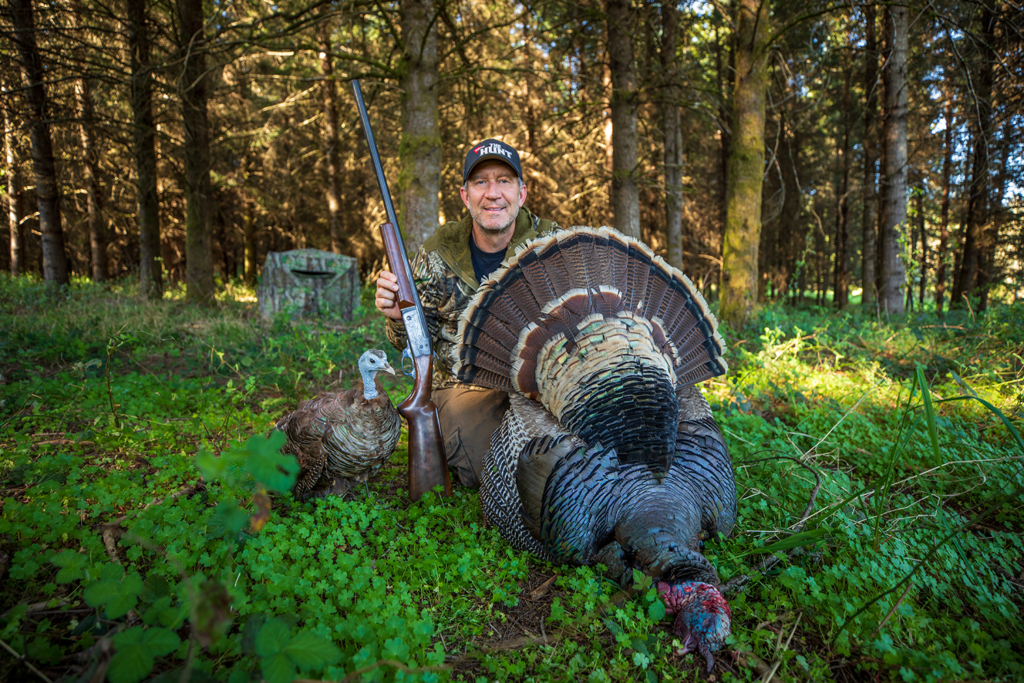
If hens are still actively feeding in the morning and not yet incubating their eggs, I don’t get serious about trying to call in a tom until an hour or two after daylight. That’s when most hens go to their nest to lay another egg.
If hen numbers are high, all the better because the more hens there are, the more toms will congregate in the area early in the season. That’s what happened in the first season described above. Many hens nested on that ridge, and many toms stuck around, hoping for a chance to breed. Later in the season, only three of the more than a dozen toms remained on that ridge. Lots of hens attracts more toms in the area early in the season.
If tom numbers are high early in the spring turkey season, they’ll regularly and aggressively respond to calls and decoys. If tom numbers are low, I’ve found it harder to pull in those birds. Old toms are smart. When few hens are around, they know it. Many of these toms come in quiet. Over the years, I’ve had better luck fooling smart toms into committing by hunting inside the forest, even in thickly vegetated river bottoms, versus trying to pull them into meadows and fields.
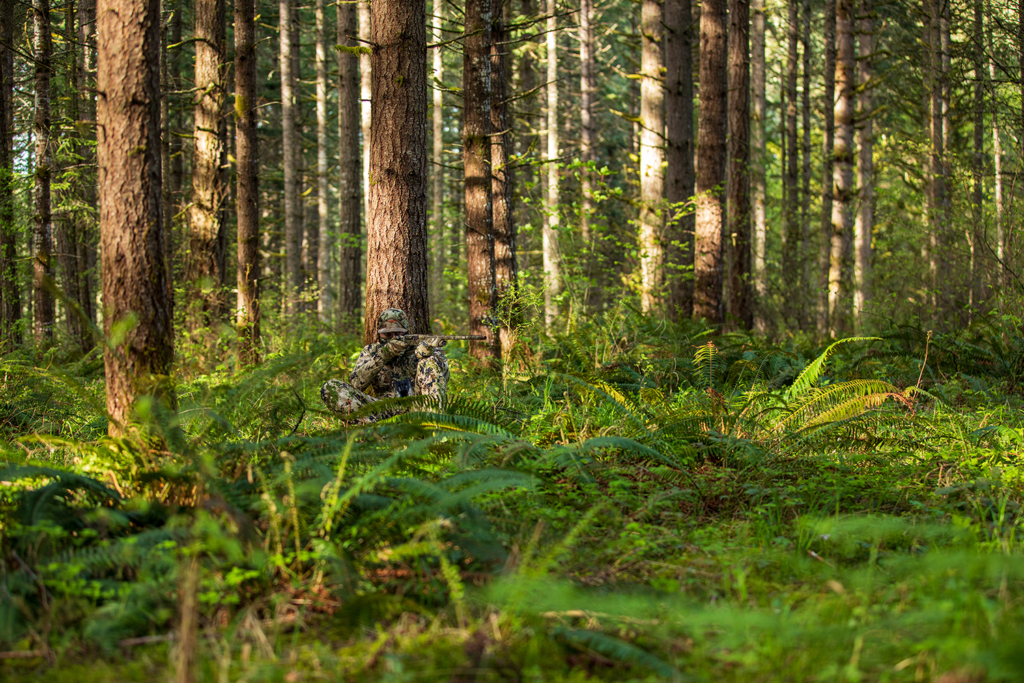
When targeting one or two mature toms, I call minimally and often go without a decoy. Once I get a gobble, I shut up, sometimes for two hours or more. I know the tom heard me and trust it’ll show up when it’s comfortable. These toms often come slow and cautious, not strutting or gobbling, but head up, searching for a hen. They keep moving in my direction if they don’t see a decoy. If they see a decoy, sometimes they hang out of range, waiting for the hen to come to them.
There’s a lot going on in the spring. Whether you’re looking to hunt turkeys in other states, go fishing, head out in search of shed antlers, or do some varmint plinking, filling turkey tags early will allow all sorts of fun to be had. Not every year is it possible, but when the situation is right, filling multiple turkey tags on the opening week of the season is very doable. This allows you to enjoy more time in the outdoors and pursue other passions.
Note: For signed copies of Scott Haugen’s popular book, Western Turkey Hunting: Strategies For All Levels visit scotthaugen.com. Follow Scott on Instagram & Facebook


